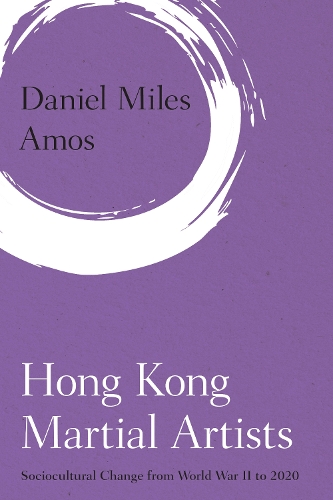
Hong Kong Martial Artists: Sociocultural Change from World War II to 2020
(Hardback)
Publishing Details
Hong Kong Martial Artists: Sociocultural Change from World War II to 2020
By (Author) Daniel Miles Amos
Bloomsbury Publishing PLC
Rowman & Littlefield International
24th March 2021
United Kingdom
Classifications
Professional and Scholarly
Non Fiction
Social and cultural anthropology
796.8159095125
Physical Properties
Hardback
228
Width 164mm, Height 227mm, Spine 23mm
531g
Description
This imaginative and innovative study by Daniel M. Amos, a longtime scholar of Cantonese culture, examines Chinese martial arts and martial artists in Hong Kong over the span of four decades, from 1976 to 2019.
One of his earlier studies, based on ethnographic research completed between 1976 and 1981, compared Chinese martial artists in the British Crown Colony of Hong Kong with martial artists in neighboring Guangzhou, China, then emerging from the Cultural Revolution after the death of Mao Zedong. Over the past forty years Hong Kong has experienced the last two decades of British colonial rule and the first twenty years of governance by mainland China. Compared to the mid-1970s, Hong Kong is now much wealthier, while sports and leisure activities have become more closely tied to a world system where play and recreation have become increasingly internationalized. No longer are most Hong Kong Chinese martial artists who belong to private martial arts brotherhoods socially marginal people as they were in 1976. However, Chinese martial arts in Hong Kong has itself become marginalized in the sense that it is greatly reduced in popularity, with competition for the leisure time of children and youth coming from electronic media and games, a variety of sports, including mixed martial arts, boxing and other Asian martial arts.
Reviews
"Amos' work is a unique contribution to the understanding of historical, contentual, and sociocultural aspects of Southeast China's martial arts. Sinologists and students of sinology will find it useful in better comprehending the diverse roles martial arts played in contemporary Chinese society. It may prove to be a meaningful source for teachers and practitioners of Chinese martial arts who are eager to learn more about the history and culture of their pursuit." --International Institute for Asian Studies
"Amos has provided an eloquent, perceptive and, at times, moving personal account of an aspect of Hongkongese and Cantonese popular culture that few, if any, Westerners have been similarly privileged to experience in such depth, and over such an extended period of time. This book will stand as an invaluable resource for all those interested in understanding the evolution of contemporary Hong Kong society and culture" --Asian Journal of Sport History & Culture
Amos has provided an eloquent, perceptive and, at times, moving personal account of an aspect of Hongkongese and Cantonese popular culture that few, if any, Westerners have been similarly privileged to experience in such depth, and over such an extended period of time. This book will stand as an invaluable resource for all those interested in understanding the evolution of contemporary Hong Kong society and culture
Amos' work is a unique contribution to the understanding of historical, contentual, and sociocultural aspects of Southeast China's martial arts. Sinologists and students of sinology will find it useful in better comprehending the diverse roles martial arts played in contemporary Chinese society. It may prove to be a meaningful source for teachers and practitioners of Chinese martial arts who are eager to learn more about the history and culture of their pursuit.
Author Bio
Daniel Miles Amos has lived in China for ten years, received three Fulbright Scholar awards; been a visiting scholar at six Chinese universities; served as an administrator with the Oregon public university system; been a faculty member at five U.S. universities, and completed a series of studies of state and national public health programs.
